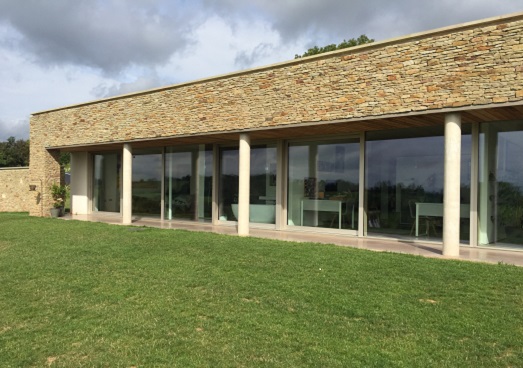Monday 14 January 2019
Elegance: The quality of being pleasingly ingenious and simple; neatness. (Oxford Dictionary)
The economic and environmental advantages of energy efficiency are extremely well documented. As well as the value of avoided energy use we now recognise the economic and social value of multiple non-energy benefits as diverse as increased productivity, improved health and better learning outcomes. The case for low energy, high performance buildings, and for retro-fitting existing buildings to achieve high levels of performance is clear. Furthermore the combination of near zero energy design, local generation through solar PV and demand response technologies mean that we are moving into an age where buildings are becoming prosumers, both producers and consumers, of energy rather than simply consumers.
There is another little explored characteristic of energy efficiency and that is elegance. In all areas, not only buildings, we have the technology and the know-how to design systems that are highly energy efficient, even energy positive – but we don’t typically use them because we engineer systems using conservative thinking and standard techniques. These systems are clunky (defined as “solid, heavy and old fashioned”) in their use of materials and energy, much of which is simply wasted. Think about a conventional UK house, which even though today’s Building Regulations are much improved, is still typically heated by a gas boiler feeding radiators and leaks heat like a sieve. The ‘boiler’ takes in gas, sets fire to it, and heats water which is pumped around panel radiators which heat up the rooms until a thermostat, often positioned badly and many of which are still based on the technology of bi-metallic strips (invented in the 1830s), and most of which are certainly not “smart” by any stretch of the imagination, detects that the temperature has been reached and sends a signal to turn off the boiler. The “bang bang” nature of the control leads to imprecise control with overshoots and lags, leading to more wastage. The construction of the house allows heat to leak away through the structure and via air infiltration, resulting in the consumer having to pay excessive energy bills and creating unnecessary carbon dioxide emissions and local heating effects.
Considering the wider system, the house takes in gas from a gas distribution system which is fed by the transmission system. Gas is fed into the system having been extracted from under the ground and treated to remove non-methane hydrocarbons and impurities such as carbon dioxide and hydrogen sulphide. Each of these steps involve massive equipment and capital expenditure, use significant amounts of energy and produce by-products and waste streams. They can be amazing pieces of chemical engineering but they are not elegant.
Now contrast that clunky system with a house designed to Passive House standards. It will have very high levels of insulation, higher performance windows and doors, a vapour barrier and a mechanical ventilation system with heat recovery. It will use 5-10% of the energy of a comparable house built to normal standards. The residents will feel more comfortable thanks to the internal surfaces having a higher temperature and the absence of draughts. They will also live in cleaner, healthier air. Imported energy will be electricity from a decarbonizing grid, (admittedly with all of its own inherent complexities and in-elegance), or in the case of a zero energy building from solar PVs linked to battery systems.
Simply put, as well as a number of other advantages such as low running costs, healthier environment and greater resilience, a Passive House building has elegance; the quality of being pleasingly ingenious and simple; neatness.
It is not only in building design that we see these characteristics. Many industrial systems use components that are based on primitive engineering such as process water bath heaters, the design of which dates back many decades. Newer, elegant systems can reduce energy usage by 50% or more. Internal combustion engine powered cars are miracles of industrial engineering but with their thousands of components and maintenance requirements, albeit much reduced over the years, they appear positively clunky compared to an electric vehicle.
As well as elegance in the final output there is something elegant about a design process itself that seeks high performance with the minimum amount of energy and resources. It requires real thought and effort compared to producing a standard “off the shelf” design. It requires thinking about what can be taken away, in the words of Antoine de Saint-Exupéry the French pilot and author; “a designer knows he has achieved perfection not when there is nothing left to add, but when there is nothing left to take away.” In a similar vein Matthew E. May, a consultant on lean development has said: “The goal of elegance is to maximize effect with minimum means” and that “Elegance is a stop doing something strategy”. It is time we demanded elegance in design and stopped accepting conventional, clunky, energy guzzling buildings, industrial systems, vehicles and other stuff.
Have a more elegant, more efficient, more effective and healthy 2019.
Comments
Comments are closed.
Dr Steven Fawkes
Welcome to my blog on energy efficiency and energy efficiency financing. The first question people ask is why my blog is called 'only eleven percent' - the answer is here. I look forward to engaging with you!
Tag cloud
Black & Veatch Building technologies Caludie Haignere China Climate co-benefits David Cameron E.On EDF EDF Pulse awards Emissions Energy Energy Bill Energy Efficiency Energy Efficiency Mission energy security Environment Europe FERC Finance Fusion Government Henri Proglio innovation Innovation Gateway investment in energy Investor Confidence Project Investors Jevons paradox M&V Management net zero new technology NorthWestern Energy Stakeholders Nuclear Prime Minister RBS renewables Research survey Technology uk energy policy US USA Wind farmsMy latest entries



